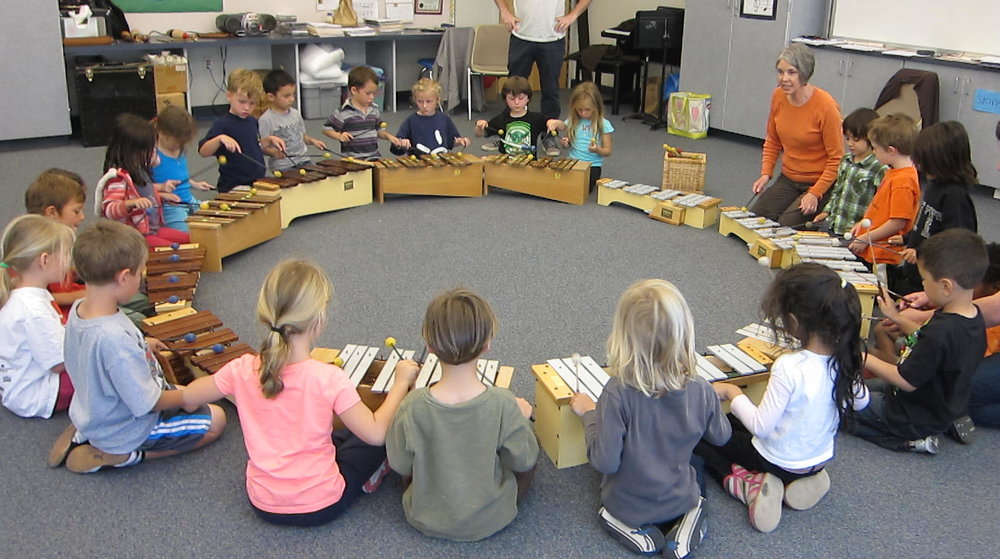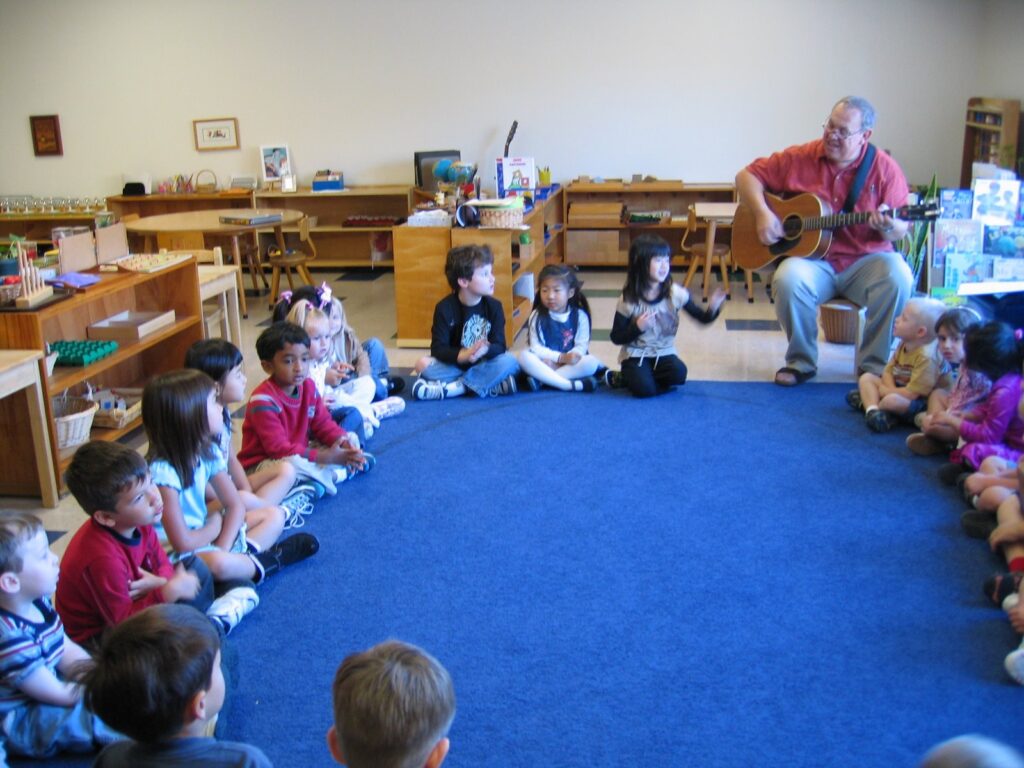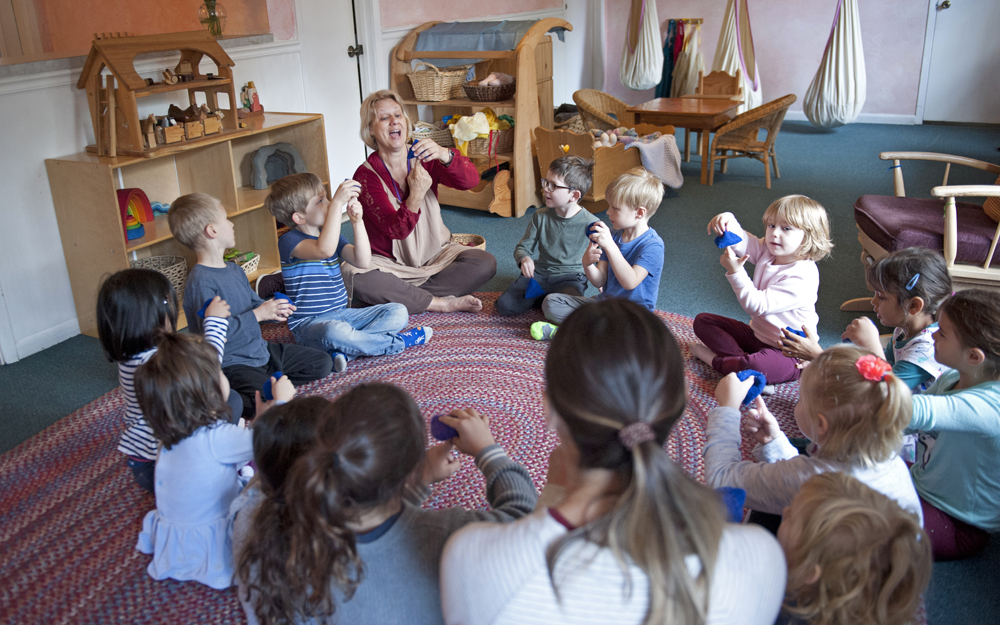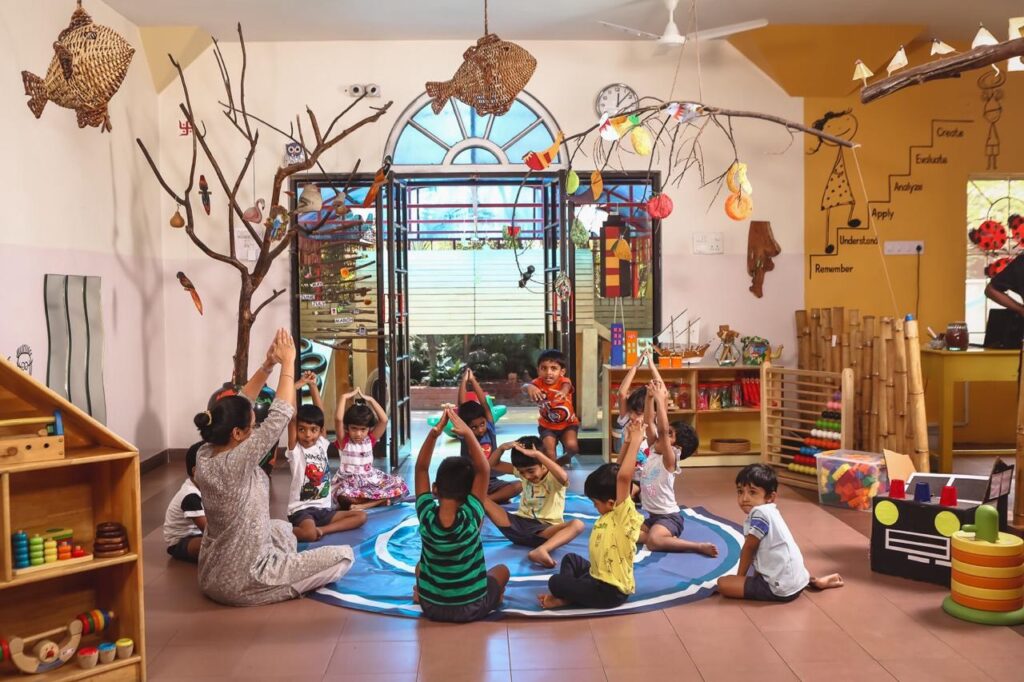Group time has become a popular classroom strategy in early child care. From the baby room through to preschool, teachers are increasingly incorporating group experiences within their daily programs. As parents, it’s something we hear a lot about from child care providers. But what exactly is group time, and how does it help our little ones?
Well, it’s more than simply reading a story together or singing songs, it’s an opportunity for the children of the class to be introduced to new concepts and ideas, share in learning experiences, talk together and to collaboratively learn. Group time is also a way to create a sense of belonging and togetherness within the class.
Coming together as a group can also be used as a transition between activities, as a break during the day, or a way to give restless children something new to focus on. It’s not a time for the children to sit and listen, but more an opportunity for teachers to engage in active learning experiences, delivered in a collaborative way.

What does group time look like?
Babies
Babies can benefit greatly from group time. Not only does it introduce the concept of group experiences, it exposes babies to social situations and provides a sense of belonging.
For babies, group time might last only five minutes and could include:
- Playing music so they get used to hearing music of varying tempos
- Participating in group sensory experiences, such as finger painting or playdough
- Reading stories together
- Using puppets to sing songs, tell stories or recite rhymes
- Gathering visual props such as flash cards to learn about everyday objects and simple words
Toddlers
Group time for toddlers is a wonderful opportunity to introduce shared experiences. It will usually last for around ten minutes and could include:
- Group games such as parachute games and duck duck goose
- Group discussions on what has happened in the day, adding simple vocabulary and everyday topics
- Reading books together and chatting about the story
- Playing music and creating movement by playing games such as musical statues and experiencing different rhythms
- Enjoying cooking experiences. Measuring and mixing to produce something together
- Participating in basic science experiences like making goop, vinegar volcanos, or melting and freezing water

Preschoolers
For preschoolers, group time can go for a little longer – around 15 minutes. If it is going well and children are still actively engaged, it could continue for longer. Preschool group time could involve activities such as:
- Playing music and making movement, introducing basic musical instruments and various tempos and sounds
- Participating in group discussions, with children heavily involved in the conversation. Topics might include what they did at the weekend, what their interests are, and what is on their minds. At this age educators can start to encourage children to ask questions and consider their thoughts.
- Playing Show and Tell to promote discussion and sharing. This could be an item from home, an experience they have had, or simply a child’s ideas or opinions
- Looking at items of interest together – insects, sticks, leaves, and using magnifying glasses together
- Daily calendar time. Using a calendar that can be rearranged daily Calendar time can spark discussion about what will happen during the day, as well as an opportunity to discuss special events such as birthdays and national holidays

Whatever the age of a child, group time should always give children the opportunity to voice and share their thoughts and ideas, provide a space to feel engaged in conversation or activities and for older groups the children will end up doing most of the talking, with the topics guided by the educator.
Educators will usually plan group time in advance, with topics arranged to meet specific learning outcomes, or discussions that will lead onto (or follow on from) smaller group activities. Educators also often have a group time routine that sets a regular pattern for children. It could start with the same song each time, giving children the opportunity to join the group, or end with the same song indicating time transition to the next activity.


